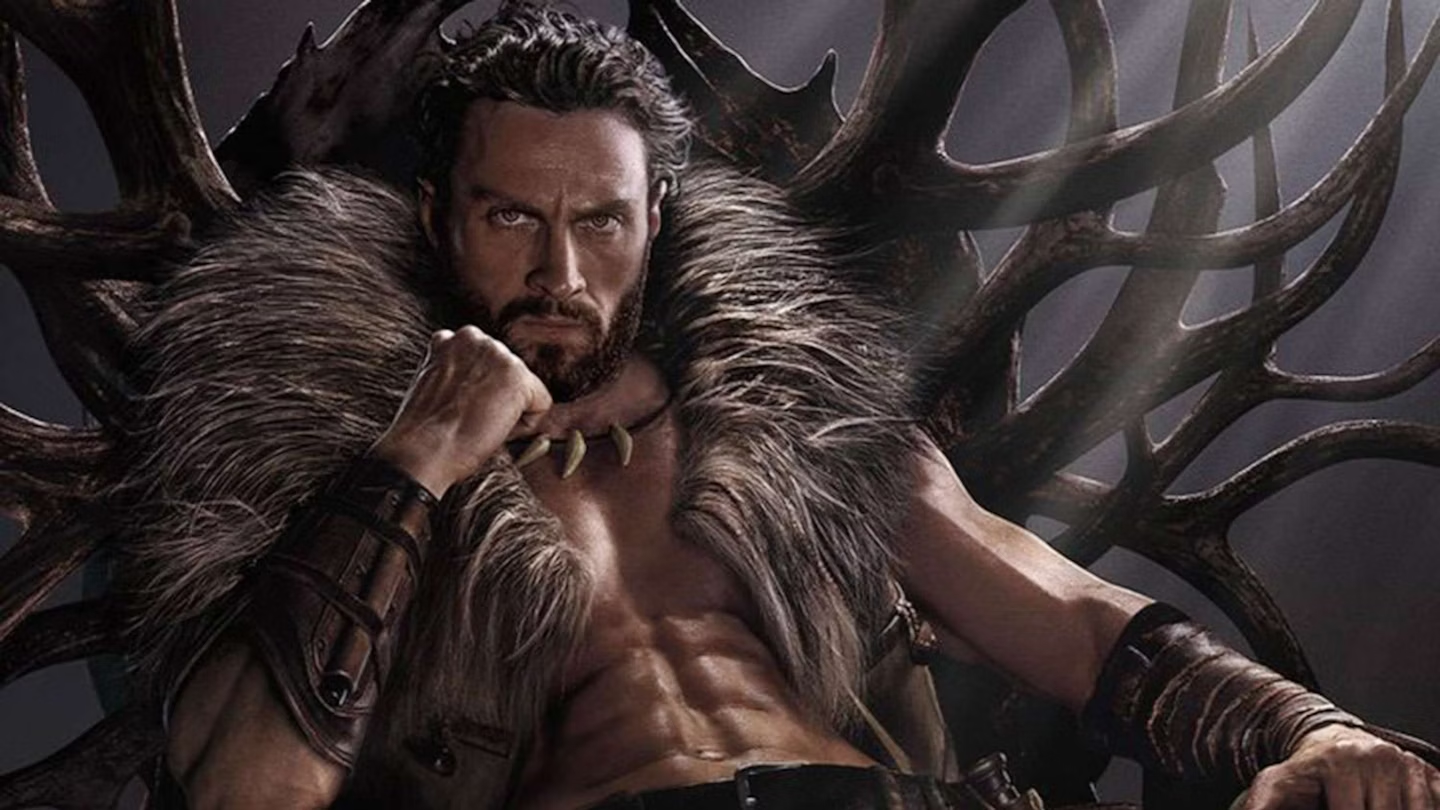[youtube https://www.youtube.com/watch?v=suyruCTA2I4&w=640&h=360]
There are certain directors whose new movies should be cause for jubilation. One of them, without any argument, should be the legendary cult Chilean filmmaker Alejandro Jodorowsky. Once the premiere filmmaker for the beautiful philosophies and absurdities one would associate with the surreal (and predating those like David Lynch and Nicolas Winding Refn, who Jodorowsky would eventually become a mentor of sorts to) with films like El Topo and Santa Sangre, Jodorowsky took an extended period of time off after his last film The Rainbow Thief took a harsh toll on him. When it seemed he would only be a fixture on the Q&A circuit, in 2013, Jodorowsky made an audaciously triumphant return with The Dance of Reailty (La danza de la realidad), the first in a multi-part autobiography of sorts mixing philosophies and styles together. As the second entry in the anthological series, Endless Poetry (Poesía sin fin) demonstrates, the story’s really getting fired up and the man behind the camera is still firing on all cylinders.
Beginning immediately where the introductory title ended – a family standing on a small boat heading into an uncertain future as cardboard cutouts of the people they’ve interacted with “wave” goodbye – the Jodorowskys have relocated from their home of Tocopilla to the Chilean capital of Santiago, where father Jaime (played again by Jodorowsky’s eldest son Brontis) has demonstrated the empathy he discovered in his earlier endeavors was short lived when he subjects two diminutive customers to an especially demeaning abuse outside his shoe store early on, something that carries over into his daily family life. Young Alejandro (also returning is Brontis’s son Jeremias Herskovits to play his grandfather as a younger man) has come to that point all youths reach in life where he’s ready to break away from his father’s near tyrannical ideals of life and lead what he feels destined for.
Fate, and the advice of the director himself, lends a helping hand in the form of a book of Federico García Lorca’s poems, scratching the itch this artistry has left Alejandro with. Jaime, refusing to let his son grow up to become a maricon (you’ll have to look the meaning up on that one for yourselves), forbids the pursuit and demands his son become a doctor in the only way he knows how: harsh intimidation and a psychological effect that’s one of the film’s most visually comedic set pieces. Alejandro’s response: to run away from home, boarding with a group of performers and artists who help him navigate his burgeoning adulthood and what lies ahead on the road to becoming a great poet. As a young adult – beautifully played by Jodorowsky’s youngest son Adan, also serving as the film’s composer – a voyage of adulthood is charted through the bastions of life that will define the man Alejandro becomes, both on and off camera.
First off, homage is demanded for Jodorowsky. Much like its predecessor, Endless Poetry, with such a beautifully opulence and absurdity that ranks with the very best of his oeuvre, is well on its way to becoming part of one of the most ambitious experiments ever committed to narrative film. The idea of an artist using his preferred medium to explore their backstory and those events that shaped their lives is not unheard of, but Jodorowsky, well into his 88th year and armed with quite the storied life, is railroading past the set expectations and, thankfully, showing no signs of stopping. Armed with the lush imagery of legendary cinematographer Christopher Doyle, the exaggerated yet meticulously crafted costumes designed by his wife Pascale and his own stylish reimagining of 1940s Santiago, Jodorowsky’s vision is quite the whimsical experience that further reflects his place as one of international cinema’s most foremost artists.
But there is also the darkness that humanity’s penchant for whimsy is intertwined by, both from the the threat of the changing political climate to the behaviors of close friends and family. A good portion of the film where Alejandro discovers his sexuality, after earlier acknowledging his own heterosexuality at the cost of a friendship with a lovelorn cousin who ultimately comes to a less than whimsical fate, when taking tempestuous poet Stella Díaz Varín as his lover goes to be one of Endless Poetry’s most meditative and provocative sequences. Not because of some deeply philosophical idea about poetry and art broached by the story, but Jodorowsky’s decision to have Pamela Flores, the same actress playing Alejandro’s musically oriented mother Sara (which she also reprises here), play Varín. Much like The Dance of Reality, there’s a certain life that comes to Endless Poetry when Ms. Flores is on-screen, be it as mother or “whore.” Here, with her vibrant crimson locks, theatrical outfits and Fellini-esque tattoos and body paints, it is the embodiment of white-hot passion, rage, jealousy and a perverse beauty that will no doubt inform Alejandro’s talents as poet and inevitable filmmaker.
Once Varín leaves the picture, Alejandro’s relationships with poets like Enrique Lihn (Leandro Taub) and Nicanor Parra (Felipe Ríos) come to be as tempestuous as the ones built on love for their conflicting natures and ideals. The former is constantly undermined by the decisions he’s made in life – and those life has made for him – while Parra comes to believe the world cannot be salvaged by art, preceding a chilling moment where the Chilean people come to support the Nazi-like President Ibañez, waiving swastika flags and adorned in masks blurring actual identity from nationalist idealism. Jodorowsky isn’t afraid to comment on the dark hours of a nation’s descent into madness, but rarely does it feel as raw as it does in these moments, especially when considering what will follow.
The cult heroine Auntie Mame once proclaimed “Life is a banquet and most poor suckers are starving to death.” When it comes to Mr. Jodorowsky’s visual poetry, whether it’s endless or isn’t, it is a banquet that gives its admirers plenty to gorge on and still overwhelm the sensations. And, much like its young protagonist disappearing into a fog of uncertainty, Endless Poetry ends on a note of uncertainty and melancholy for what came before, but acknowledging there’s still beauty in life to be found beyond the fog bank, just as there’s beauty and whimsy to be awed by in what lies ahead in the next three chapters of Jodorowsky’s magnum opus.
Endless Poetry is currently playing in limited release and will be expanding out from ABKCO Films over the course of the summer.
By William Coffey

Movie
‘Mufasa: The Lion King’ Will Leave You Breathless

“Mufasa: The Lion King” is a visually stunning addition to the beloved Lion King franchise, offering a fresh and emotionally resonant take on the origins of one of Disney’s most iconic characters. The film beautifully explores Mufasa’s journey, balancing heartfelt moments with touches of comedy that lighten the mood and make the story accessible to audiences of all ages. The animation is breathtaking, capturing the vibrant landscapes and lush environments of the Pride Lands, adding depth to Mufasa’s character and his relationships.
The storytelling is compelling, effectively pulling at the heartstrings while providing insights into Mufasa’s character before he becomes the legendary king. However, the setup for Scar’s betrayal feels somewhat underdeveloped, lacking the deeper motivation that could have enriched their complex brotherly relationship. This missed opportunity leaves a slight gap in understanding Scar’s actions, which could have elevated the dramatic stakes.
The musical score is impressive, featuring memorable songs that enhance the emotional impact of pivotal scenes. While there are several standout tracks, one song, in particular, resonates deeply and is sure to linger in viewers’ minds long after the credits roll. Overall, “Mufasa: The Lion King” is an amazing film and a worthy addition to the Lion King lore that manages to deliver both laughter and tears, offering a rich tapestry of storytelling that fans will appreciate.
Movie
Is ‘Kraven the Hunter’ a Total Letdown?

“Kraven the Hunter,” directed by J.C. Chandor, aims to introduce a beloved Spider-Man villain to the big screen, but unfortunately, it falls short of expectations. The film suffers from noticeable issues, notably an overuse of ADR (Automated Dialogue Replacement), which detracts from the authenticity of the characters’ interactions and contributes to an uneven audio experience. This technical flaw is compounded by rough storytelling that feels disjointed and lacking in coherence, leaving viewers struggling to connect with the narrative.
Aaron Taylor-Johnson delivers a commendable performance as Kraven, showcasing the character’s gritty nature and complex motivations. His portrayal has potential, and it’s evident that he could elevate the character far beyond what is presented with a stronger script and direction. However, the absence of Spider-Man, a central figure in Kraven’s lore, leaves a void that the film struggles to fill. Without this critical connection, the plot meanders and fails to create the tension or stakes that fans of the superhero genre crave.
Additionally, including Rhino as a villain feels like a missed opportunity; he is presented more as a gag character with limited screen time, undermining any sense of threat or depth. For the average moviegoer, “Kraven the Hunter” might entertain but ultimately feels like a mediocre viewing experience. Comic book fans, however, may find disappointment in this lackluster attempt to create a solo character film. Instead of an exhilarating dive into Kraven’s world, the film presents a watered-down version, leaving audiences wishing for a more cohesive vision that honors its comic book roots.
Movie
A Brief Review and History of A Year Without a Santa Claus

A Year Without a Santa Claus, the 1974 stop-motion holiday classic produced by Rankin/Bass, is a heartwarming and whimsical tale that has cemented its place in holiday traditions. Based on Phyllis McGinley’s 1956 book, the story revolves around a disheartened Santa Claus who, feeling unappreciated, decides to take a year off from his Christmas duties. It’s up to Mrs. Claus and a pair of well-meaning elves, Jingle and Jangle, to reignite the Christmas spirit and show Santa the world’s unwavering belief in him.
The movie is beloved for its unforgettable characters, especially the bickering Miser Brothers, Snow Miser and Heat Miser. Their catchy, vaudeville-style musical numbers, “Snow Miser Song” and “Heat Miser Song”, are so iconic they’ve become cultural touchstones, often parodied and celebrated decades later.
Directed by Arthur Rankin Jr. and Jules Bass, the film continues the duo’s tradition of stop-motion magic, blending heartfelt storytelling with quirky humor. The voice cast, featuring Mickey Rooney as Santa and Shirley Booth as Mrs. Claus, delivers standout performances. Booth’s warm narration was her final acting role before retirement, adding a layer of poignancy to the film.
Initially released on December 10, 1974, on ABC, the special didn’t immediately achieve the legendary status of Rudolph the Red-Nosed Reindeer. However, it gained a dedicated following through annual holiday airings, nostalgic appeal, and its distinct charm.
The film’s themes of hope, unity, and rekindling joy remain timeless, making it a perennial favorite for audiences of all ages. Its blend of humor, catchy songs, and a touching message about believing in magic and goodwill ensures its enduring legacy during the holiday season.
For fans of holiday classics, A Year Without a Santa Claus is a must-watch that never fails to warm hearts and spread cheer.

